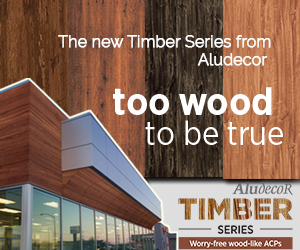ACPs (aluminium composite panels) have been lauded as an exceptionally popular material for both cladding and building facades for decades. The overall makeup of an ACP is essentially an insulating a low density, insulating core sandwiched between two strong aluminium sheets, which is why it is known as a sandwich panel. The varied applications of ACP are largely why many services have been drawn to them and their applications, whether for exterior wall cladding materials or interior decorations and wall coverings. It was, interestingly, designed for signs and is now one of the most common materials used in the industry. However, it’s an entirely different story nowadays, with its application prevalent in a wide range of architectural and building projects.
History of ACPs
The aluminum composite panel is a new form of decorative material whose history goes back to the 1960s. It is a composite of aluminium and plastic. Swiss Aluminium researchers presented the concept of mixing aluminium alloy sheets with different other materials and subsequently conducted several tests. Finally, in 1965, the aluminium and low-density polyethylene plastic composite panel manufacturing technique was verified. Few people are aware that solar panels were co-developed by two large firms, Alusingen and BASF, in 1969.
Even though one of the key firms was later purchased, they set the stage for one of the essential construction breakthroughs of our day. Even though it was first introduced at the end of the 1960s, it was not until the mid-80s that people realised how beneficial it was as a building material. The substantial and widespread usage of ACPs began in earnest only after that. During the 1990s, an increasing number of services worldwide realised and understood how it might improve architectural performance and lower construction costs for commercial and residential structures. Then, after years of research, Aludecor, the most innovative Indian Manufacturer of Aluminium Composite Panel was founded in 2004.
The Composition Change
Despite the fact that there were many different ACP brands over the years, the fundamental core of the product remained the same. The majority of the modifications were made to the ACP panels’ composition. What was the primary motivation behind this? After the burning of a few high-rise buildings, the painful reality about the flammability of its core components became public awareness. Fortunately, the core material has been changed and replaced with non-flammable material that poses no risk of combustion.
One of the most important considerations is the total thickness of the panels, which ranges from 3-6 mm. The insulated core is made up of a variety of materials, however, there are three basic categories:
- PE Cores:These cores are comprised of polyethylene, also commonly known as plastic cores
- FR Cores:The core is made of non-halogenated inorganic mineral compounds, which are non-combustible and act as fire retardants.
- Aluminium Cores:The core is either solid aluminium or analuminium honeycombin this example.
Many new ACP products that have recently been introduced offer a significant number of architectural benefits over conventional building materials, thanks to a variety of changes to the panel quality as well as the core. Lighter weight, durability, material flexibility, improved insulating characteristics, and higher strength-to-weight ratio is just a few of them.
You can also checkadvantages of using ACP Sheets
The Evolution& Continuous Innovation
ACP has gone a long way from its humble beginnings, which goes without saying. Here are a few examples of projects and venues where it has been used:
- Fascias with curves
- Renovations to buildings
- Coverings for machines
- Internal dividers
- Container-based structures
When it comes to the potential of this unusual substance, the list above is simply the tip of the iceberg. Because large sections of modern cities are made up of these panels in many situations, we may expect to see a lot more advanced versions of ACPs in the future.
Aluminium composite panels are being employed in a variety of applications. Because they may be changed and reshaped in many ways, ACP panels can be used to create any shape for building exteriors basis designs.
Explore the wonders of ACP Sheets with India’s most loved brand Aludecor. Log on towww.aludecor.comto know more about our products or call us on our toll-free number1800 102 0407



